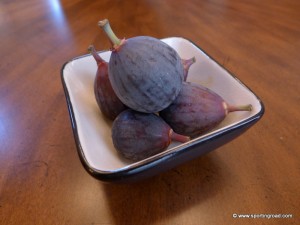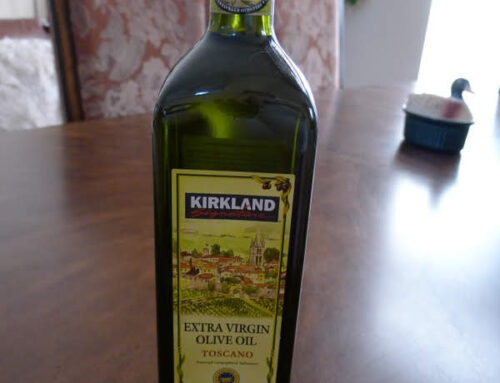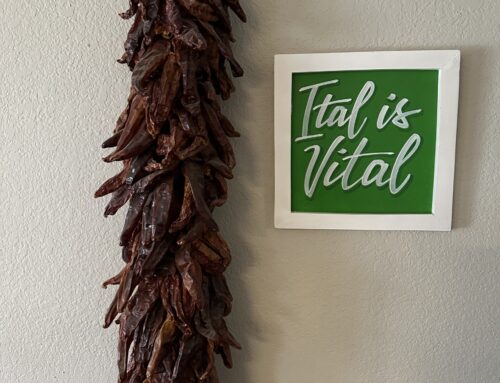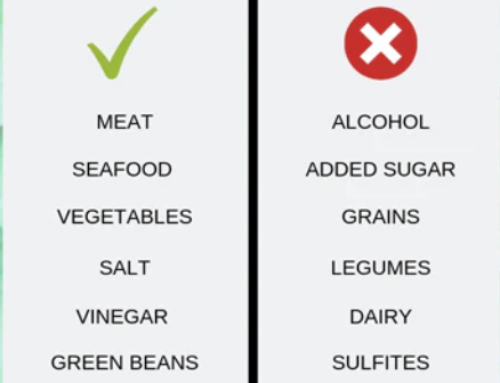 From August until October (or just really September and a week or so of October, at least here in the Wild West groceries stores–and, even then you may have to special order them), California figs are here in season, though occasionally you’ll find them from other parts of the world, whether they be Black Mission, Brown Turkey, Calimyrna, Kadota, Sierra, or more exotic types. Figs have a bad reputation from their sisters, prunes, which are about as similar as a Chardonnay and a Port. We love figs, we hate prunes. In fact, prunes developed such a bad image, in part because the only decent dried prune is a Newton and in part due to the bad dried figs sent in Christmas baskets round the world, that the California growers have changed their names to “dried figs.” American ingenuity and marketing skills at work, but a dried fig still tastes like a prune, which is nothing like a fig.
From August until October (or just really September and a week or so of October, at least here in the Wild West groceries stores–and, even then you may have to special order them), California figs are here in season, though occasionally you’ll find them from other parts of the world, whether they be Black Mission, Brown Turkey, Calimyrna, Kadota, Sierra, or more exotic types. Figs have a bad reputation from their sisters, prunes, which are about as similar as a Chardonnay and a Port. We love figs, we hate prunes. In fact, prunes developed such a bad image, in part because the only decent dried prune is a Newton and in part due to the bad dried figs sent in Christmas baskets round the world, that the California growers have changed their names to “dried figs.” American ingenuity and marketing skills at work, but a dried fig still tastes like a prune, which is nothing like a fig.
Figs are delicate and therefore only keep refrigerated for 5-7 days, less unrefrigerated. Hence, the reluctance of groceries to keep them in stock, as they often rot before they sell and Americans have largely lost touch with what to do with them. We buy them buy the pallet when in their short season and simple arrange the ones we won’t eat in a single layer on a pan and put in the freezer, transferring them to sealed freezer bags when frozen, keeping them in the freezer, for up to 6-12 months.
Our favorite way to eat them is simply raw, slicing off the stem and tougher bottom skin. Serve on an antipasti platter, or simply with some French cheeses, fruits, and a baguette.
Or, another favorite, try cutting a deep X into the top of the figs and stuffing them with a small spoon of mild goat cheese. Drizzle with local artisanal honey.
Also, we hope that you will try these recipes for figs:





